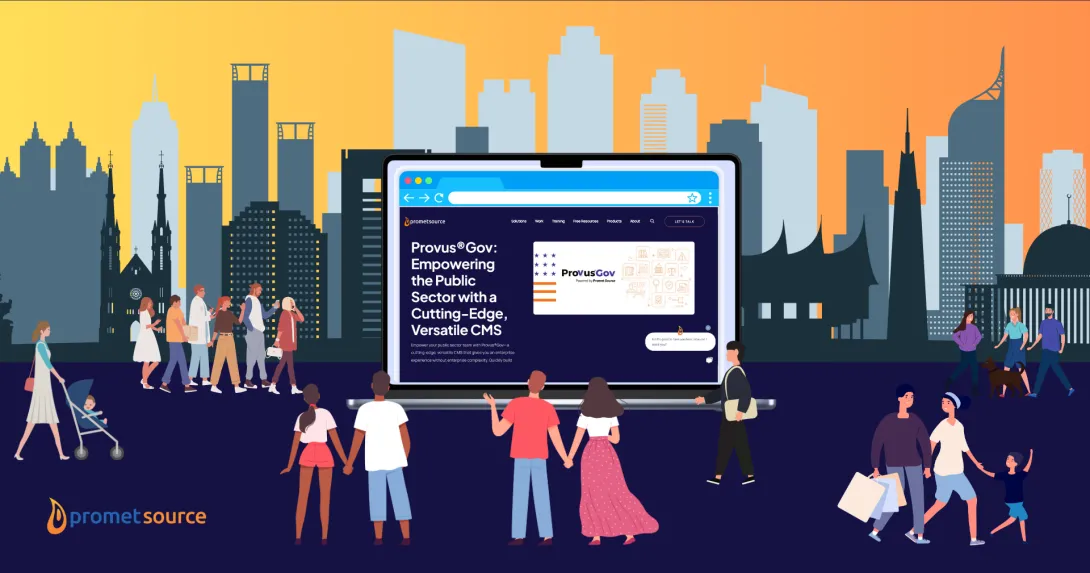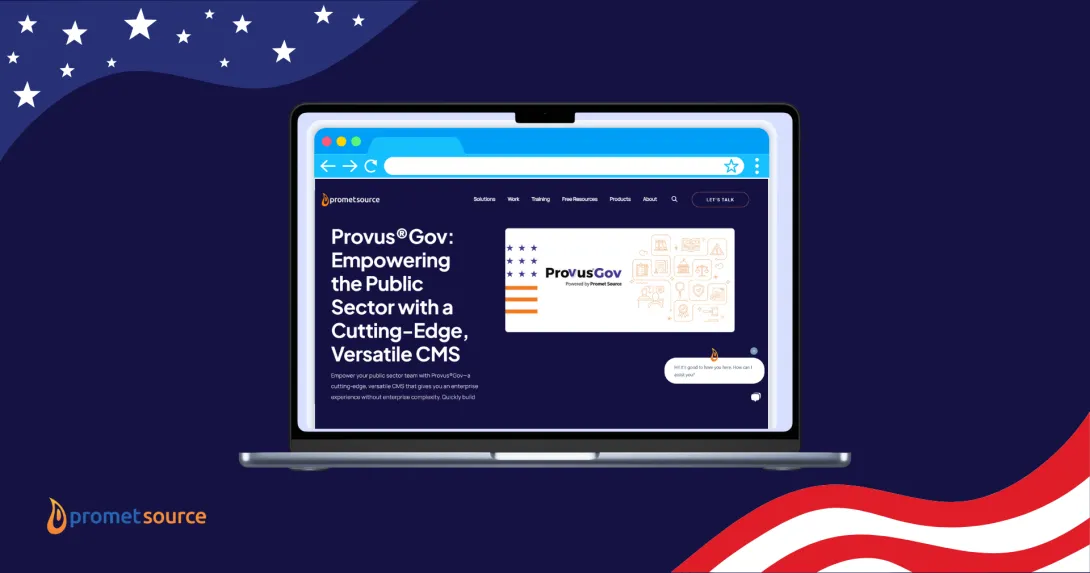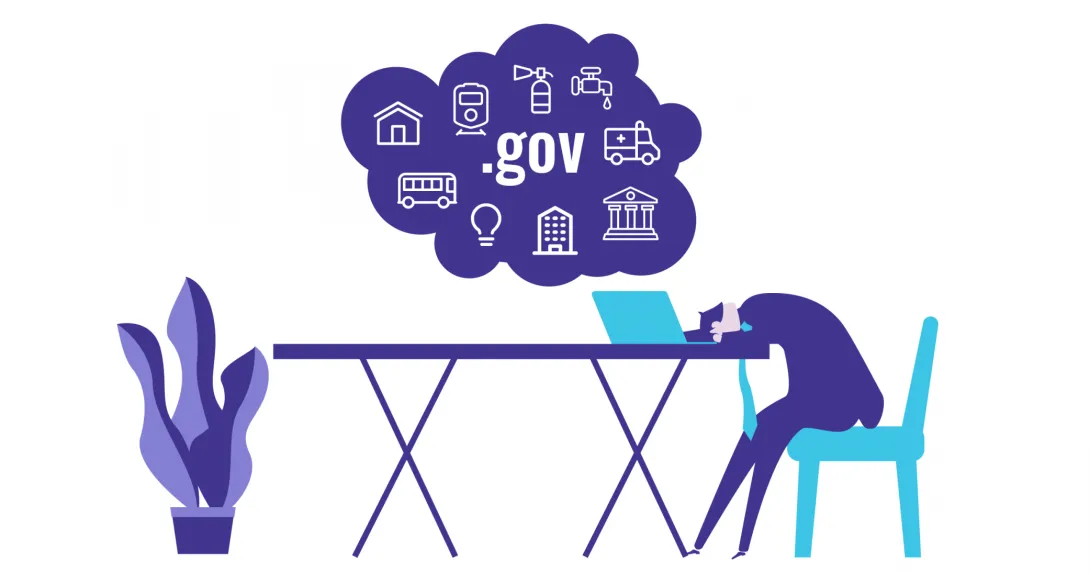RFPs are Tough, but They Don't Have to Be (+ Template and Matrix)
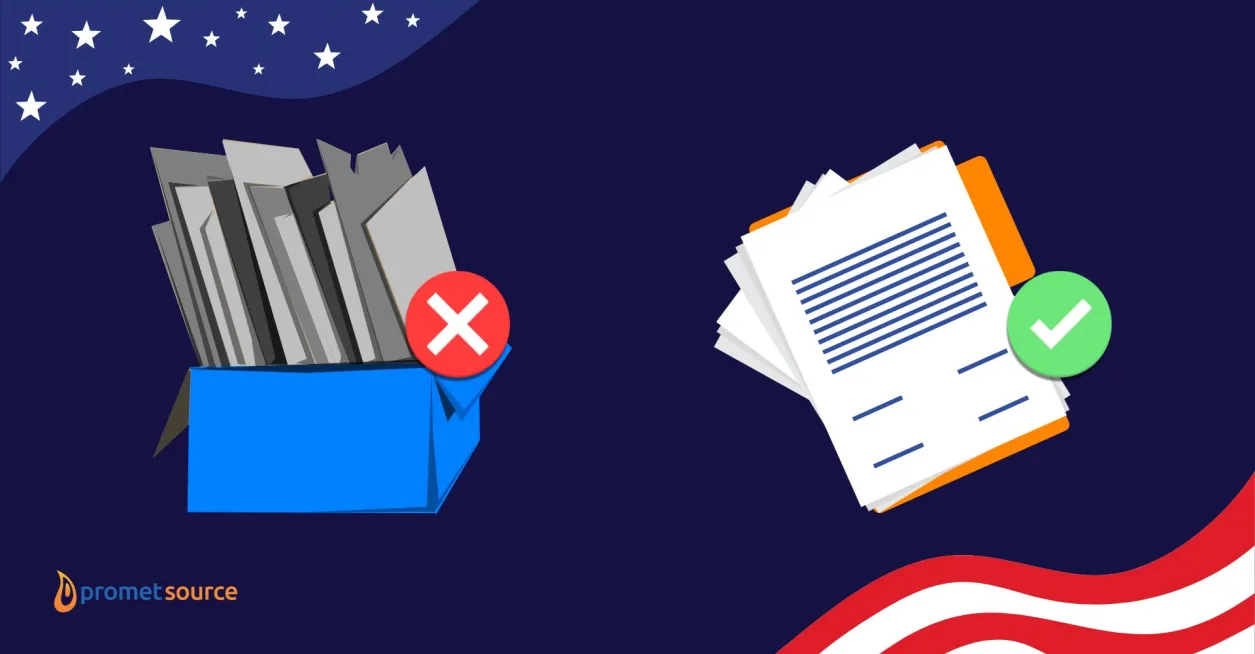
Table of Contents
Takeaway: RFPs can be time-consuming, but state and local government agencies can streamline the procurement process and ensure government website redesigns are efficient and successful by implementing templates, adopting best practices, and integrating technology to overcome common procurement challenges.
DOWNLOAD THE FREE RFP TEMPLATE FOR GOVERNMENT
Simplifying the government RFP process
Government agencies, especially at the state and local levels, often face daunting challenges when issuing Requests for Proposals (RFPs) for website redesign projects. The process can feel complex and overwhelming, with the need to ensure fairness, transparency, and efficiency while selecting the right vendor.
But here’s the good news: RFPs don’t have to be so tough. With the right tools and a strategic approach, you can streamline your RFP process and make vendor selection easier and more efficient.
In this guide, you'll get:
- Step-by-step instructions to simplify your RFP process
- Free, ready-to-use templates and evaluation tools
- Proven best practices from 20+ years of government procurement experience
Whether you're a procurement officer, communications lead, or IT manager, you'll find practical solutions to make your next website redesign RFP easier and more effective.
DOWNLOAD THE FREE EVALUATION & SCORING MATRIX
Why the RFP process feels tough
It’s no secret that RFPs require careful planning and execution. From crafting clear evaluation criteria to ensuring that vendor responses meet your agency’s needs, there’s a lot at stake. Common challenges include:
- Ambiguous Requirements: Many RFPs lack clarity in what the agency needs, which can result in receiving non-relevant or over-complicated proposals.
- Time-Consuming Process: The entire process often takes much longer than anticipated, from drafting the RFP to evaluating responses.
- Vendor Selection Pressure: The pressure to choose the right vendor can be immense, especially with budget constraints and political accountability.
However, with the right approach, you can streamline this process and make it much more efficient.
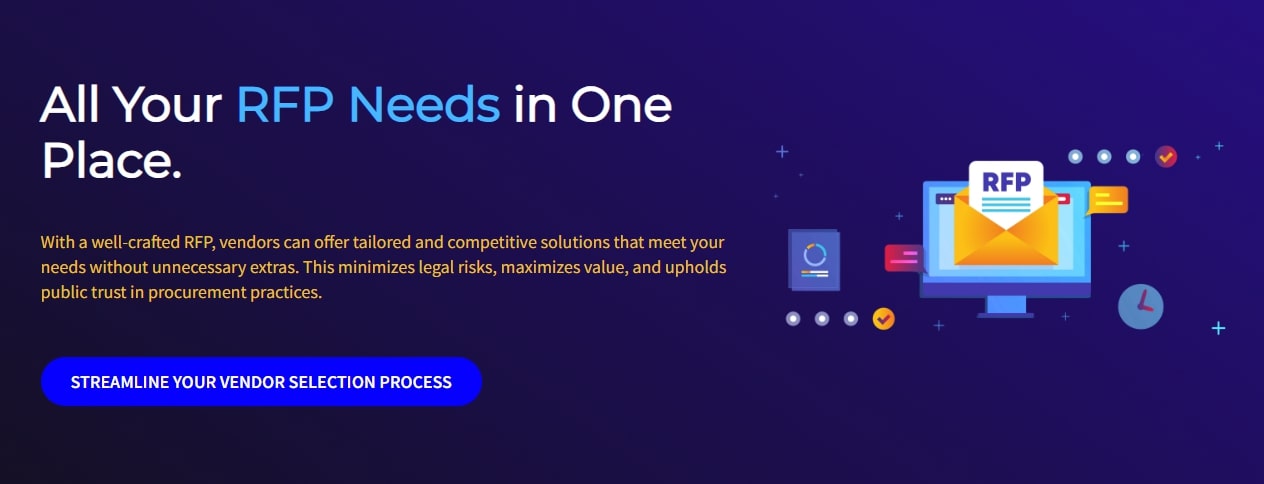
4 steps to streamline your RFP process
Amy Groenhof and I have helped numerous government agencies simplify their RFP processes and find the right partners for their website redesign projects. Specifically, I’ve been developing and responding to RFPs within various industries (including government!) for nearly 20 years, while Amy—our Proposal Writer—has been spearheading our government RFP responses for almost 5 years.
Based on our experience, here are some practical steps you can take to overcome complexities with RFPs:
1. Use proven templates to save time
One of the fastest ways to get your RFP process off the ground is to use pre-made RFP templates.
Our free RFP Template and Evaluation Scoring Matrix are designed for government agencies. We have taken our 20+ years of experience drafting and responding to RFPs and put all those lessons learned into a done-for-you template.
These resources help you:
- Create structured, detailed RFPs quickly
- Ensure consistent evaluation across vendors
- Follow procurement best practices
- Meet compliance requirements
2. Define clear requirements and evaluation criteria
When drafting your RFP, ensure that your requirements are clear and detailed.
Procurement officers should work closely with IT and communications teams to:
- Outline the project’s needs
- Define expected outcomes
- Set success metrics
A well-structured RFP will attract the right vendors and result in proposals that better match your needs.
We often hear from our project managers that projects that begin with the most detailed requirements are often the most efficient projects they manage. We leveraged their expertise when developing this requirements list in the pre-made RFP template.
Here’s a snapshot of some requirements in the template.
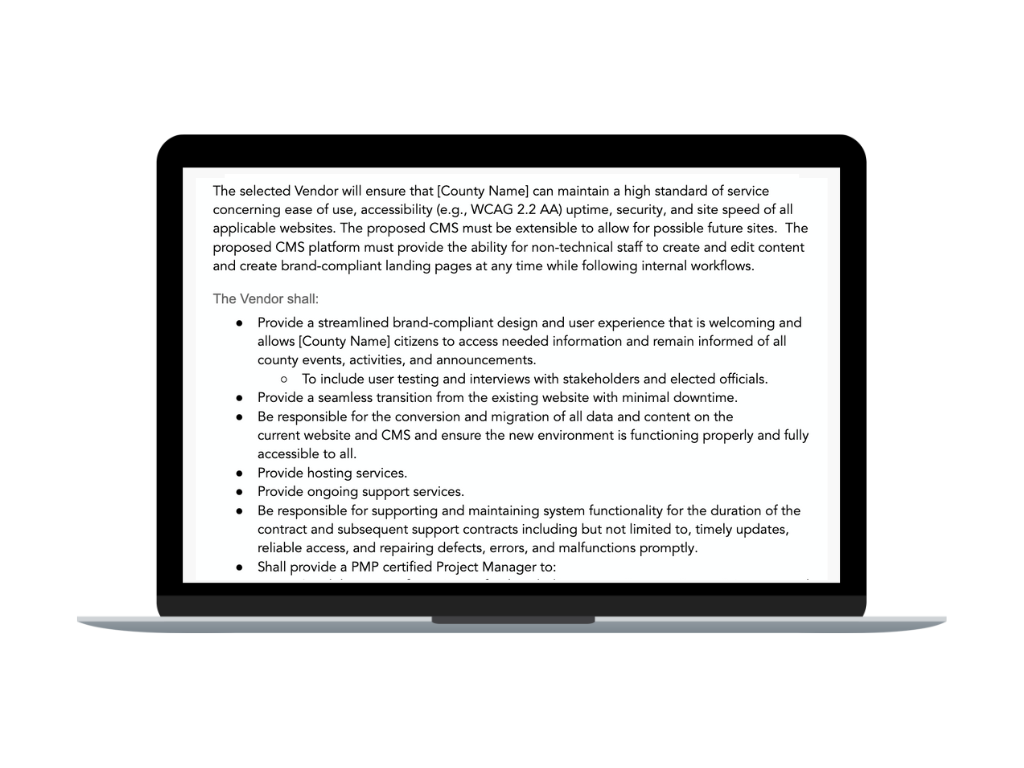
Additionally, it would be best if you established precise evaluation criteria from the start. What are the key factors you will consider? Our Evaluation Scoring Matrix can help ensure that all vendors are evaluated equally.
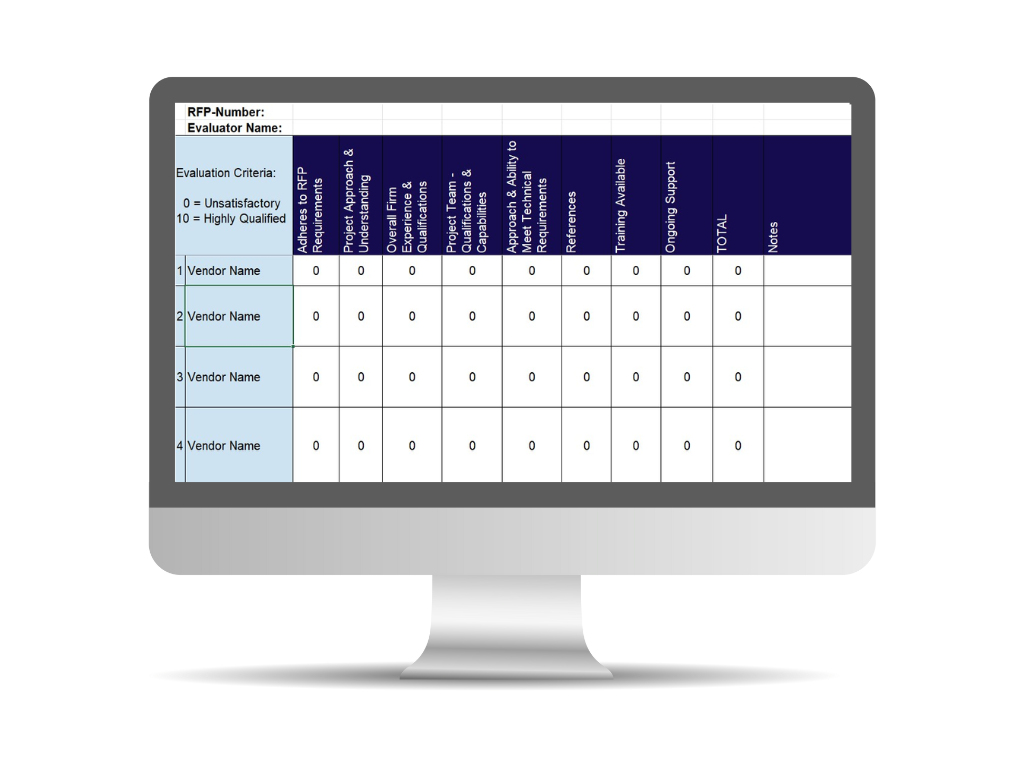
3. Avoid common mistakes in government RFPs
Government RFPs often fall into a few common traps that delay or complicate the procurement process. Here are some mistakes to avoid:
- Overly Complicated Documents: Simplify where possible. Focus on the core needs and avoid overwhelming vendors with too much technical jargon.
- Lack of Engagement with Vendors: After the RFP is issued, engage vendors through pre-proposal meetings or Q&A sessions to clarify expectations and foster communication. You can even submit a partial RFP draft and we will provide you with free feedback to ensure you will attract the right vendors for your project. Feel free to pick our brains!

- Missing the Importance of Timelines: State timelines for the proposal submission and the selection process. This avoids confusion and ensures vendors can meet deadlines.
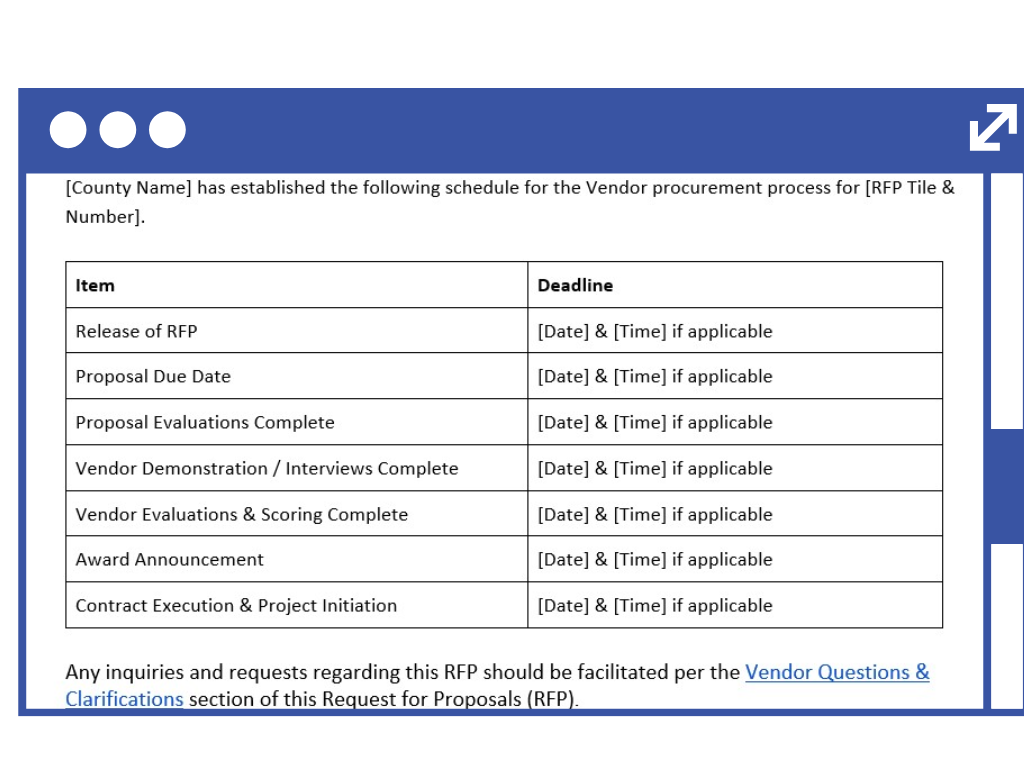
4. Leverage technology to streamline the process
Technology plays a critical role in simplifying the RFP process for government agencies. Consider using procurement platforms or evaluation tools (like those provided in this article) to automate some aspects of vendor selection.
Modern procurement tools can transform your RFP process by helping you:
- Organize and compare proposals easily
- Maintain transparency and accountability during the evaluation phase
- Ensure that all stakeholders can access and review the same information in real-time
Leverage the resources found in this blog in addition to taking stock in your agency's RFP process to research software that could create efficiencies within your agency via automation.
DOWNLOAD THE FREE EVALUATION & SCORING MATRIX
Government procurement best practices
To ensure the success of your RFP process and attract the right vendors for your project, it’s important to follow best practices that have been proven to work for government agencies:
- Collaborate with Your Team Early: Procurement officers should work closely with IT and communication departments and a vendor partner when possible, to ensure that all project requirements are well understood and documented.
- Stay Transparent: Transparency is key to building trust during the RFP process. Clearly communicate timelines, evaluation criteria, and expectations to all vendors using the same channels and the same format for all.
- Engage Vendors: Hosting pre-bid meetings or allowing for Q&A helps vendors better understand your needs and submit higher-quality proposals. Engaging vendors ensures the responses meet your expectations and choosing the ideal vendor is a no-brainer instead of a hassle.
Get started with our free RFP resources for government agencies
Are you ready to simplify your next RFP? Download our free RFP Template and Evaluation Scoring Matrix to save time and ensure your procurement process runs smoothly.
Get our newsletter
Get weekly Drupal and AI technology advancement news, pro tips, ideas, insights, and more.

